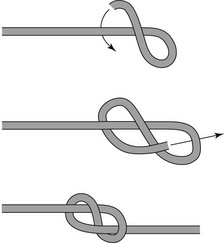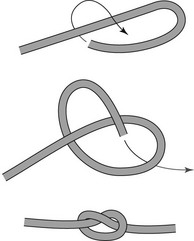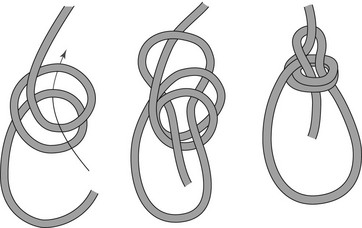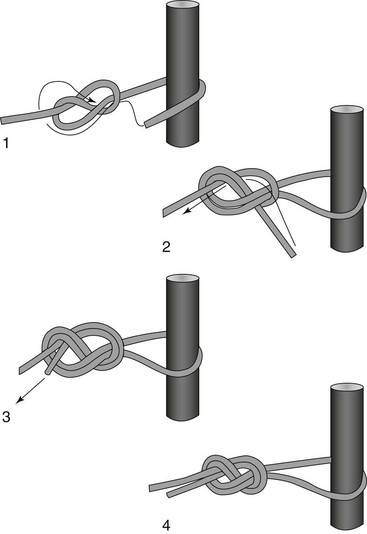Knots
Practice before You Really Need to Use Them
1. Stopper knot—a knot tied at the end of a rope to keep something from slipping off the rope (e.g., figure-8 knot)
2. End-of-line knot—a knot used to form a loop or other construction in the end of a rope to anchor, tie in, or attach the rope to something (e.g., double bowline knot)
3. Midline knot—a knot used to form a loop in the middle of the rope for clipping into, grasping, or bypassing a piece of damaged rope (e.g., butterfly knot)
4. Knots to join two ropes—a knot used to connect two ropes of equal or unequal diameter (e.g., double fisherman’s bend)
5. Safety knot—a final knot tied into the tail of the rope after the original knot is tied to keep the original knot from deforming or unraveling (e.g., barrel knot)
6. Hitch—a knot that is tied around something, which conforms to the shape of the object around which it is tied and that does not keep its shape when the object around which it is tied is removed (e.g., Prusik hitch)
7. Tied loop—a knot that forms a fixed eye or loop in the end of a rope (e.g., bowline knot)
Anatomy of a Knot
1. The working end of the rope is the section used to tie or rig the knot.
2. The standing part of the rope is the section not actively used to form the knot or rigging.
3. The running end of the rope is the free end.
5. A bight of rope is formed when the rope takes a U-turn on itself so that the running end and standing end run parallel to each other. The U portion, where the rope bends, is referred to as the bight.
6. A loop of rope is made by crossing a portion of the standing end over or under the running end. Note that a loop closes, as compared with a bight. Many knots that form a loop from a bight in the standing part of the rope are named something on a bight, such as figure-8 on a bight.
7. The tail of a rope is the (usually) short, unused length of rope that is left over once the knot is tied.
Examples of knots are presented in Figures 60-1 to 60-24.
Stopper Knots (Figs. 60-1 and 60-2)

FIGURE 60-1 Figure-8 stopper knot.

FIGURE 60-2 Overhand stopper knot.









